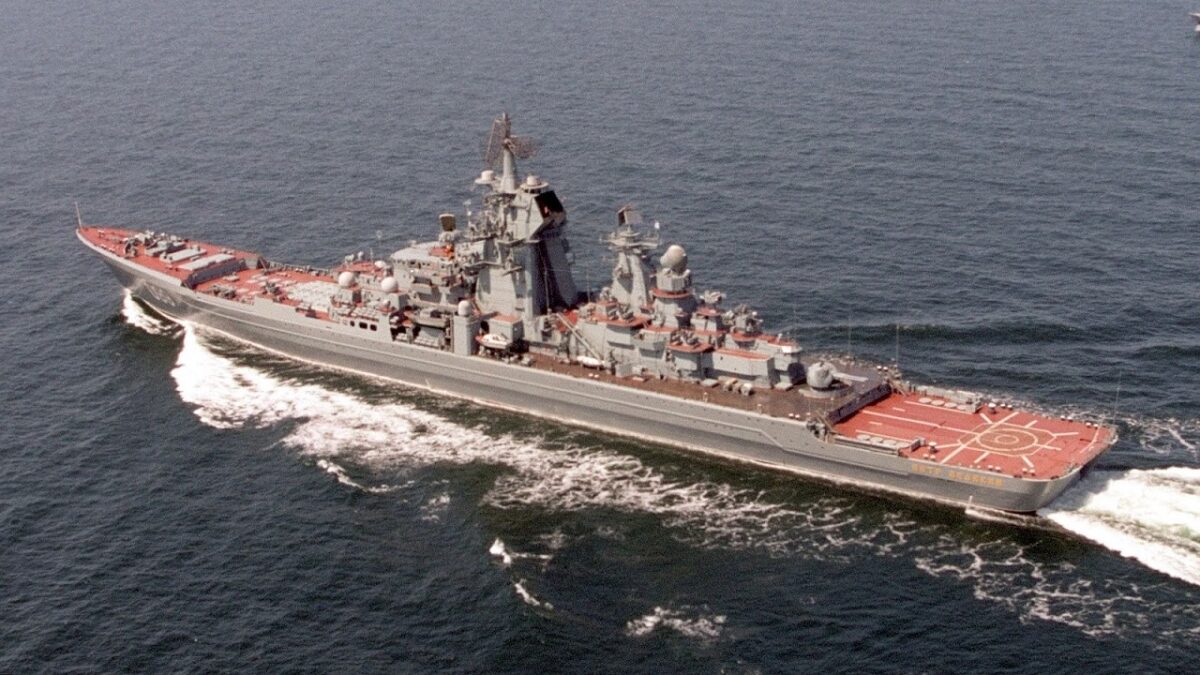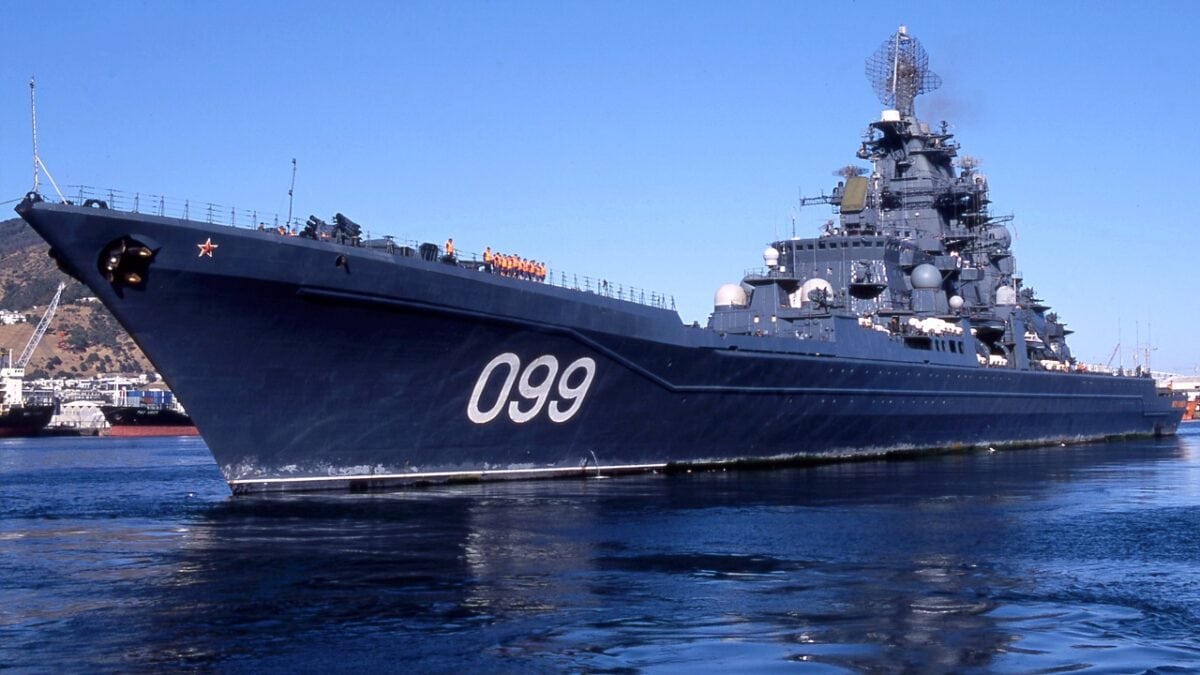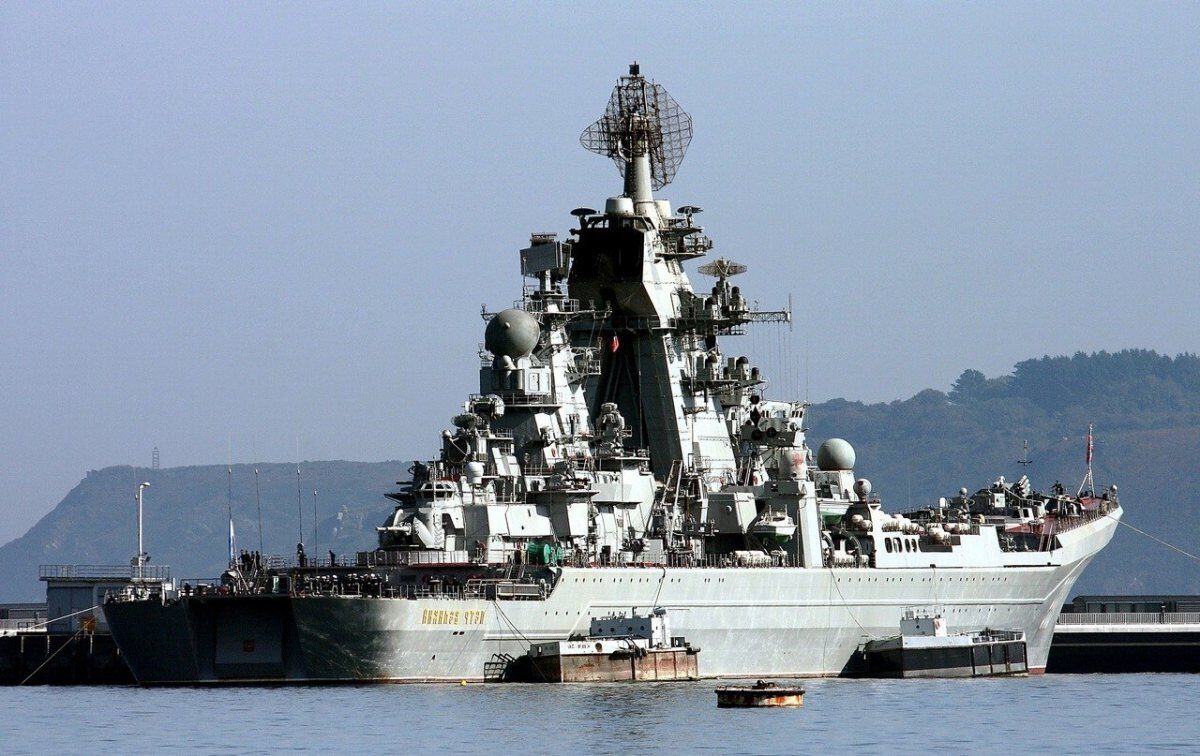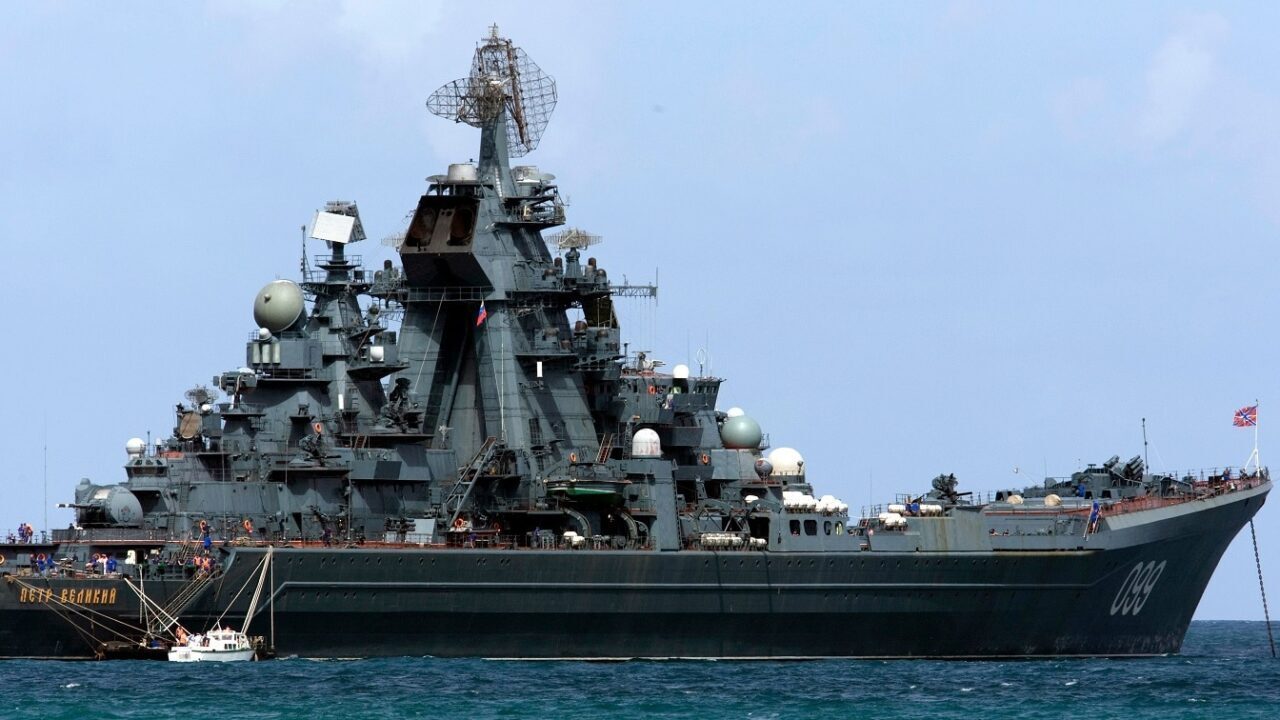Russia often makes grandiose claims about its military equipment that do not match the reality. Throughout Russia’s invasion of Ukraine, many of Moscow’s self-proclaimed top-of-the-line airframes and other platforms have fallen well short of promised performance. For example, as Russia’s most advanced jet, the Su-57 was expected to quickly dominate the skies over Ukraine. However, the Su-57 has hardly seen any action in the conflict. The Kremlin has also perpetuated misguided claims regarding its nuclear battlecruisers. The Russian navy only has one Kirov-class battlecruiser in service today.
The Kirov Class Was Built for the Soviet Navy
Moscow’s class of nuclear-powered guided-missile cruisers was conceptualized for the Soviet navy in the early 1970s. The class of vessels was named to honor the first of a series of four ships constructed, formerly named Kirov, now Admiral Ushakov.
The first ship of the Kirov class was laid down in the mid-1970s, while the sole remaining vessels — the Pyotr Velikiy and Admiral Nakhimov — were laid down in the 1980s. Admiral Nakhimov has been docked in Sevmash for years, undergoing perpetual repairs and so-called modernization efforts. Considering Moscow’s abysmal track record of maintaining naval vessels, the Nakhimov is unlikely to set sail anytime soon.
Changing Mission
Kirov-class super cruisers were developed at the height of the Cold War as a counter to America’s carrier groups. Once the USSR collapsed, Russia had fewer resources to devote to the super cruisers. For decades, the future of the Admiral Ushakov and Admiral Lazarev Kirov-class vessels hung by a thread as the Russian navy decided what to do with these massive and expensive vessels. Ultimately, the navy nixed the ships’ modernization and service-life extensions in 2019.
During the Cold War, the Kirov-class vessels were intended to function primarily as anti-submarine ships, sporting a variety of SS-N-14 missiles and torpedoes. Over time, the mission for the super cruisers evolved, and the ships function largely as mission cruisers today. Ordnance-wise, the Kirov-class ships can carry 96 S-300F and 192 3K95 short-range surface-to-air missiles, in addition to several AK-630 close-up defense systems. Perhaps the Kirov class’s most significant asset, however, is its ability to carry 20 P-700 Granit anti-ship missiles. These missiles have a range of over 600 kilometers and carry a 750 kg high-explosive warhead or a nuclear warhead.
Are They Junk? Past and Future Capabilities
Admiral Nakhimov has been stuck in a perpetual cycle of repairs since 1997. As detailed in a previous 19FortyFive piece, “There is some information to suggest the Admiral Nakhimov (and the Pyotr Velikiy, if/when it begins its refit) will be equipped with Russia’s new hypersonic Tsirkon missiles, which are currently under development. Even though it is possible that the Pyotr Velikiy would immediately begin refit once the process is completed on the Admiral Nakhimov, the fact that what was supposed to be a process of a few years has seen the estimated completion date of the Admiral Nakhimov’s refit be pushed back to 2017, 2018, 2021, and now 2023 does not suggest that the Pyotr Velikiy’s turn is coming soon.”

Kirov-Class battlecruiser. Image Credit: Creative Commons.

Kirov-Class Battlecruiser. Image Credit: Russian Navy.

Kirov-Class. Image Credit: Creative Commons.
In January, Russian officials announced that Admiral Nakhimov could be ready to sail by 2023. Based on the amount of time and resources the Kremlin has sunk into its Kirov-class updates, the massive vessels will likely remain in service with the Russian navy for decades to come.
MORE: PAK DA – Is Russia New Stealth Bomber a Joke?
MORE: Was the F-14 Tomcat Retired Too Early?
MORE: Nimitz-Class – The Best Aircraft Carrier Ever?
Maya Carlin is a Senior Editor with 19FortyFive. She is also an analyst with the Center for Security Policy and a former Anna Sobol Levy Fellow at IDC Herzliya in Israel. She has by-lines in many publications, including The National Interest, Jerusalem Post, and Times of Israel.

